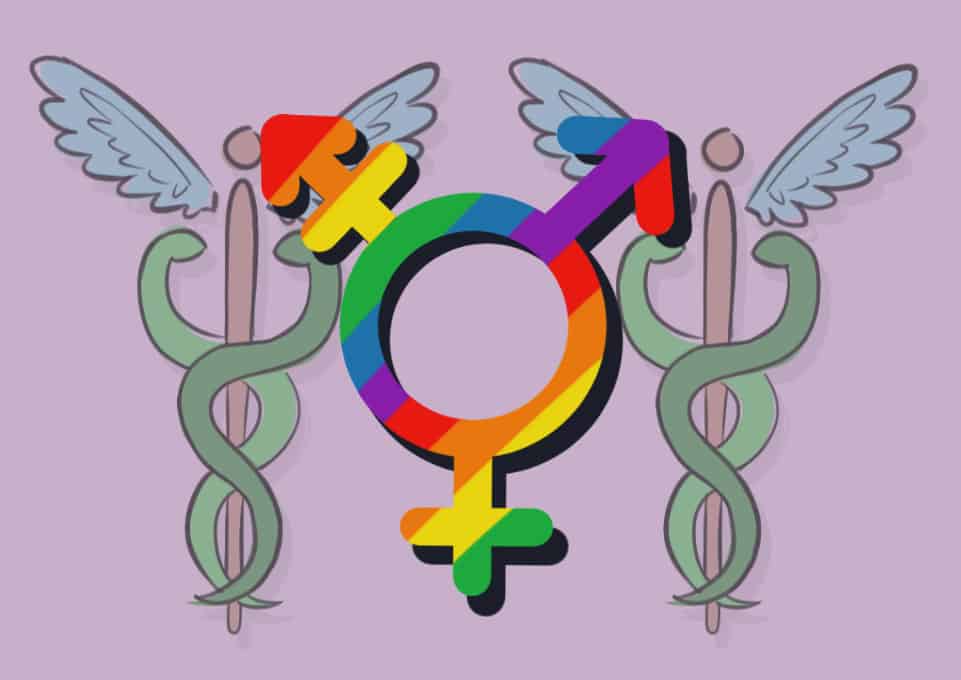Canada’s transgender population continues to face challenges from transphobia and discrimination, which, among other factors, influences their health and development.
Recent efforts by the Canadian government and affiliated agencies address issues that LGBTQ+ communities face.
In 2016, the Canadian federal government passed Bill C-16, which amended the Canadian Human Rights Act to include gender identity and expression as one of the prohibited grounds of discrimination.
In the health care setting, LGBTQ+ individuals face multiple barriers that contribute to the disparities in the management and care of these individuals.
Alex Abramovich, Assistant Professor at the Dalla Lana School of Public Health and Independent Scientist at the Centre for Addiction and Mental Health (CAMH), has been studying the health care needs of LGBTQ+ youth for more than a decade.
From his experience working with young trans people, Abramovich wrote to The Varsity that this population has an unmet need for mental and physical care.
Many transgender individuals are “unable to come out and speak honestly about their identity and health care needs because they may not know whether or not it will be safe to do so,” wrote Abramovich, explaining how gender identity affects access to health care.
He added that some trans youth do not even have a family physician due to “previous experiences where their gender identity and sexual orientation were pathologized.”
To address the urgency for improved health care accessibility by trans populations, Abramovich recently co-authored an article in the Canadian Medical Association Journal (CMAJ) that provides comprehensive steps for physicians to follow to become more trans-inclusive and trans-competent.
One of the recommendations listed in the article was to privately ask all patients what name and pronoun they go by, instead of making assumptions based on perceptions of their voice, appearance, or name and sex listed on their health card.
Another key recommendation made in the article was to ensure that patients are addressed with a gender-affirming approach that does not view gender variance as pathological.
“These are just some of the things that health care professionals can implement immediately,” wrote Abramovich, expanding on the purpose of publishing such health care recommendations.
Staff Physician and Adolescent Medicine Specialist at St. Michael’s Hospital, Joey Bonifacio, argues in a review article recently published in CMAJ that adolescents’ mental health improves when they receive gender-affirming care.
Bonifacio mentions that primary care providers are equipped with some published medical guidelines on providing care for the transgender population. However, practice is hampered by a lack of experience and training in trans health issues.
He suggests that primary care providers support trans adolescents with gender dysphoria by facilitating discussions about the “timing of social transitioning, reviewing and overseeing the potential use of medical management, and connecting them with local community resources and supports.”
Besides improving the management and care of trans individuals, U of T-affiliated researchers suggest that routine data collection can “contribute to evolving norms in Canadian society regarding sexual orientation and gender identity.”
Currently, there is a lack of national and territorial data on trans populations, mainly because there is no standardized way of collecting and analyzing data about gender identity.
Andrew Pinto, Assistant Professor in the Department of Family and Community Medicine at U of T and Staff Physician at St. Michael’s Hospital, tackled this challenge with his research group by examining how Canadian patients react to being asked routinely about sexual orientation and gender identity.
By administering a sociodemographic survey of all patients in the waiting rooms of St. Michael’s Hospital on a regular basis and later conducting semi-structured interviews with 27 patients, Pinto and his research group found that the majority of patients appreciated the variety of options available for both the sexual orientation and gender identity questions.
However, some patients felt discomfort in answering such questions, and some felt that their identities were not reflected in the options despite efforts to provide diversity in survey responses.
Based on these research findings, the authors suggest that an open-ended option such as “Identity not listed (please specify)” could be included in addition to prespecified options. They also suggest that health care organizations should set the stage for asking these questions by explaining how the data will be used and ensuring that clinics are LGBTQ+-positive spaces.
Pinto and his colleagues hope that further research will be done in a variety of Canadian and international settings in consultation with LGBTQ+ communities, as such data can help organizations identify health inequities and build a framework with improved and inclusive care.


